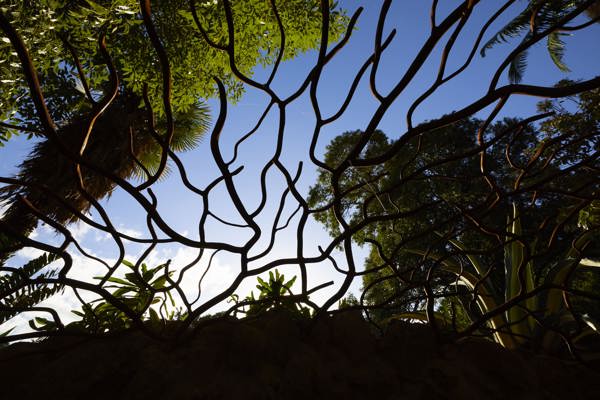
Elizabeth James
Senior Research Scientist (Conservation Genetics)
- Conservation and ecological genetics of threatened species
- Reproductive biology of clonal plants, particularly polyploidy species
- Influence of dispersal mechanisms on landscape genetic structure
- ResearchGate profile
Publications
Craigie Vanessa, Reynolds Debbie, Walsh Neville, Mueck Steve, Liz James and Rudolph Pauline (2018). “Spiny rice-flower: small, unassuming but with many friends” Chapter 6 in “A Book of Hope – Recovering Australian Threatened Species” Eds Stephen Garnett, Peter Latch, David Lindenmayer, John Woinarski. CSIRO Publishing.
Neal, W.C., James, E.A., Bayly, M.J. (2019). Classification, phylogeography and conservation of pink zieria (Zieria veronicea; Rutaceae): influence of changes in climate, geology and sea level in south-eastern Australia. Plant Systematics and Evolution 305, 503–520. doi:/10.1007/s0060 6-019-01589 -z
James, E.A., Brown, G.K., Jordan, R., Ohlsen, D.O. (2018). Rarity, taxonomy and genetics: the chequered history of Grevillea williamsonii (Proteaceae). Pacific Conservation Biology 24, 329-338. doi.org:/ 10.1071/PC17050
James, E.A., Brown, G.K., Jordan, R., Griffin, P.G. (2017) Clonality and spatial genetic structure in the rare Australian shrub Grevillea infecunda. Folia Geobotanica 52, 387-400. doi.org:/10.1007/s12224-016-9258-8.
Broadhurst, L., Breed, M., Lowe, A., Bragg, J., Catullo, R., Coates, D., Encinas-Viso, F., Gellie, N., James, E., Krauss, S., Potts, B., Rossetto, M., Shepherd, M., Byrne, M. (2017). Genetic diversity and structure of the Australian flora. Diversity and Distributions 23, 41-52.
Ahrens, C.W., Supple, M., Aitken, N., Cantrill, D.J., Borevitz, J., James, E.A. (2017) Genomic diversity guides conservation strategies among rare terrestrial orchid species when taxonomy remains uncertain. Annals of Botany 119, 1267-1277.
Ahrens, C.W. and James, E.A., 2016. Regional genetic structure and environmental variables influence our conservation approach for feather-heads (Ptilotus macrocephalus). Journal of Heredity, 107, 238–247
Ahrens, C.W. and James, E.A. 2016. Conserving the small milkwort, Comesperma polygaloides, a vulnerable subshrub in a fragmented landscape. Conservation Genetics, 17, 891–901.
Foster, C.S.P., Cantrill, D.J., James, E.A., Syme, A.E., Jordan, R., Douglas, R., Ho, S.Y.W. and Henwood, M.J., 2016. Molecular phylogenetics provides new insights into the systematics of Pimelea and Thecanthes (Thymelaeaceae). Australian Systematic Botany, 29, 185–196.
Holmes, G.D., Hall, N.E., Gendall, A.R., Boon, P.I. and James, E.A., 2016. Using transcriptomics to identify differential gene expression in response to salinity among Australian Phragmites australis clones. Frontiers in Plant Science, 7, 432.
James, E.A., 2016. The application of genetics in balancing the conservation and utilisation of biodiversity in multi-use environments. Journal of Integrated Field Science, 13, 1–7.
Ahrens, C.W., James, E.A. (2015). Range-wide genetic analysis reveals limited structure and suggests asexual patterns in the rare forb Senecio macrocarpus. Botanical Journal of the Linnean Society 115, 256-269. doi.org:/ 10.1111/bij.12512.
Ahrens, C.W., James, E.A. (2014). Characterization of 13 microsatellite markers for Diuris basaltica (Orchidaceae) and related species Applications in Plant Sciences 2, 1300069.
Ahrens, C.W., James, E.A. (2014). Isolation and characterization of 12 microsatellite markers for the vulnerable subshrub Comesperma polygaloides (Polygalaceae). Conservation Genetics Resources 6, 967-968.
James, E.A., Jordan, R. (2014). Limited structure and widespread diversity suggest potential buffers to genetic erosion in a threatened grassland shrub Pimelea spinescens (Thymelaeaceae). Conservation Genetics 15, 305-317. doi.org:/10.1007/s10592-013-0539-y
James, E.A., McDougall, K.L. (2014) Spatial genetic structure reflects extensive clonality, low genotypic diversity and habitat fragmentation in Grevillea renwickiana (Proteaceae), a rare, sterile shrub from south-eastern Australia. Annals of Botany 114: 413-423.
Ahrens, C.W., James, E.A. (2013). Characterization of microsatellite markers for the vulnerable grassland forb Senecio macrocarpus (Asteraceae). Applications in Plant Sciences 1, 1300041.
Hurry, C.R., James, E.A., Thompson, R. (2013). Connectivity, genetic structure and stress response of Phragmites australis: issues for restoration in a salinizing wetland system. Aquatic Botany 104, 138-146. doi.org/10.1016/j.aquabot.2012.08.001
James, E. A., Jordan, R. and Griffin, P. C. (2013). Spatial genetic analysis of two polyploid macrophytes reveals high connectivity in a modified wetland. Freshwater Biology 58, 2102-2113. doi.org:/ 10.1111/fwb.12194.
French, P., James, E. and Walsh, N. (2012). Analysis of genetic variation in a disjunct, narcotic producing, population of Duboisia hopwoodii. Muelleria 20, 65–71.
Hurry, C.R., James, E.A., Thompson, R. (2012). Connectivity, genetic structure and stress response of Phragmites australis: issues for restoration in a salinizing wetland system. Aquatic Botany 104, 138–146.http://dx.doi.org/10.1016/j.aquabot.2012.08.001
James E.A., Brown G.K., Citroen R. and Blacket, M.J. (2012). Microsatellite marker development for two species of holly-leafed Grevillea and cross-species amplification in the Aspleniifolia/Hookeriana Subgroup (Proteaceae).Conservation Genetics Resources 4, 137–140. doi: 10.1007/s12686-011-9493-5.
Jordan, R., James, E.A., Brown, G.K. and Brown, A.L. (2012.) Isolation of microsatellites using 454-sequencing for the grassland shrub Pimelea spinescens (Thymelaeaceae). Conservation Genetics Resources 4, 1085–1087.
Robinson, R.W., James, E.A. and Boon, P.I. (2012). Population structure in the clonal, woody wetland plant Melaleuca ericifolia (Myrtaceae): an analysis using historical aerial photographs and molecular techniques. Australian Journal of Botany 60, 9–19. http://dx.doi.org/10.1071/BT11292
James, E.A., Brown, G.K., Citroen, R., Rossetto, M. and C. Porter. (2011). Development of microsatellite loci in Triglochin procera (Juncaginaceae), a polyploid wetland plant. Conservation Genetic Resources 3,103–105. doi: 10.1007/s12686-010-9301-7
Weeks, A.R., Sgro, Carla M., Young, A.G., Frankham, R., Mitchell, N.J., Miller, K.A., Byrne, M., Coates, D.J., Eldridge, M.D.B., Sunnucks, P., Breed, M.F.,James, E.A. and A.A. Hoffmann. (2011). Assessing the benefits and risks of translocations in changing environments: a genetic perspective. Evolutionary Applications. doi: 10.1111/j.1752-4571.2011.00192.x
James, E.A., Brown, G.K., Citroen, R., Rossetto, M. and Porter, C. (2010). Development of microsatellite loci in Triglochin procera (Juncaginaceae), a polyploid wetland plant. Conservation Genetics Resources. doi: 10.1007/s12686-010-9301-7
Smith, Z.F., James, E.A., McDonnell, M.J. and McLean, C.B. (2009). Planting conditions improve translocation success of the endangered terrestrial orchidDiuris fragrantissima (Orchidaceae). Australian Journal of Botany 57, 200–209.
Holmes, G.D., James, E.A. and Hoffmann A.A. (2008). Limitations to reproductive output and genetic rescue in populations of the rare shrubGrevillea repens (Proteaceae). Annals of Botany 102, 1031–1041.
Holmes, G.D., James, E.A. and Hoffmann, A.A. (2008). Divergent levels of genetic variation and ploidy among small populations of the rare shrub,Grevillea repens. Conservation Genetics 10, 827–837. doi: 10.1007/S10592-008-9643-9
Robinson, R. W., Boon, P.I., Sawtell, N., James, E.A. and Cross, R. (2008). Development of hypocotyl hairs and their importance for recruitment success in seedlings of Melaleuca ericifolia (Swamp Paperbark) Sm. Australian Journal of Botany 56, 564–573.
Smith, Z.F., James, E.A. and McLean, C.B. (2008). In situ morphometric study of the Diuris punctata species complex (Orchidaceae) in southeastern Australia, with implications for the conservation of D. fragrantissima. Australian Systematic Botany 21, 289–300.
James, E.A. and McDougall, K.L. (2007). Extent of clonality, genetic diversity and decline in the endangered mallee Eucalyptus imlayensis. Australian Journal of Botany 55, 548–553.
Smith, Z.F., James, E.A. and McLean, C.B. (2007). Investigation of the phylogenetic relationships between Diuris fragrantissima and its closest relatives using AFLPs. The Environmentalist 27, 217–226.
Smith, Z.F., Murphy, D.J., James, E.A. and McLean, C.B. (2005). Molecular investigation of the Diuris 'punctata' group in south-eastern Australia. Selbyana26, 217–228.
Smith, Z.F., James, E.A. and Ladiges, P. (2004). Morphological and genetic variation within the rare daisy Olearia pannosa Hook. subsp. cardiophylla (F. Muell) D.A. Cooke. Muelleria 20, 33–48.
Garrick, R.C., Orthia L.A. and James, E.A. (2003). Genetic comparison of populations of therare Gorae Leek Orchid, Prasophyllum diversiflorum Nicholls (Orchidaceae). Muelleria 18, 89–97.
Orthia, L.A., Garrick, R.C. and James, E.A. (2003). Genetic comparison between Victorian and Tasmanian populations of Prasophyllum correctumD.L.Jones (Orchidaceae) suggests different species. Muelleria 18, 79–87.
Bartolome, M., Walsh, N.G., James, E.A. and Ladiges, P. (2002). A new, rare species of Acacia from North East Victoria. Australian Systematic Botany 15, 465–475.
Coates, F., Walsh, N. and James, E.A. (2002). Threats to the survival of the Grampians Pin Cushion Lily (Borya mirabilis, Liliaceae) – a short range endemic from western Victoria. Australian Systematic Botany 15, 477–483.
James, E.A., Ryan, M.C., Fripp, Y.J. and Brown, A.J. (2002). Genetic evidence supports reclassification of Agrostis billardierei var. filifolia and A. aemula R.Br. var. setifolia as a single species, A. punicea (Poaceae). Muelleria 16, 29–38.
Kimpton, S., James, E.A. and Drinnan, A. (2002). Reproductive biology and genetic diversity in Grevillea infecunda (Proteaceae), a rare plant with no known seed production. Australian Systematic Botany 15, 485–492.
Mole, B.J., Duretto, M.F., Ladiges, P.Y. and James, E.A. (2002). Variation withinAsterolasia asteriscophora sensu lato (Rutaceae: Boronieae) and the recognition of new taxa in eastern Australia. Muelleria 16, 87–112.
Ashburner, G.R., Faure, M.G., James, E.A., Thompson, W.K. and Halloran, G.M. (2001). Pollination and breeding system of a population of Tall Coconut Palm,Cocos nucifera L. (Arecaceae) on the Gazelle Peninsula of Papua New Guinea.Pacific Conservation Biology 6, 344–351.
James, E.A. and Brown, A.J. (2000). Morphological and genetic variation in the endangered Victorian endemic grass Agrostis adamsonii Vickery (Poaceae).Australian Journal of Botany 48, 383–395.
Warburton, C.L., James, E.A., Fripp, Y.J., Trueman, S.J. and Wallace, H.M. (2000). Clonality and sexual reproductive failure in remnant populations ofSantalum lanceolatum (Santalaceae). Biological Conservation 96, 45–54.
James, E.A. and Ashburner, G.R. (1997). Intraspecific variation in Astelia australiana (Liliaceae) and implications for the conservation of this Australian species. Biological Conservation 82, 253–261.
James, E.A. (1996). New genetic approaches to plant conservation. Combined Proceedings International Plant Propagators Society 46, 55.
James, E.A. (1995). Water quality of stored and run-off water in plant nurseries and implications for recycling. Combined Proceedings International Plant Propagators Society 41, 117–120.
James, E.A. and Knox, R.B. (1993). Reproductive biology of the Australian species of the genus Pandorea (Bignoniaceae). Australian Journal of Botany 41, 611–623.
James, E.A., Thompson, W.K., Richards, D. and Knox, R.B. (1992). Quantitative analysis of pollination diallels of two Australian species of Pandorea(Bignoniaceae). Theoretical and Applied Genetics 84, 656–661.
James, E.A. and Richards, D. (1986). The influence of iron source on the water-holding properties of potting media amended with water-absorbing polymers. Scientia Horticulturae 28, 201–208.
James, E.A. (2017). A genetic approach to the conservation of Holly leaf grevilleas (Proteaceae). PhD Thesis, University of Melbourne.
James, E.A. (1992). Aspects of the reproductive biology, breeding system and horticultural improvement of the genus Pandorea. M.Sc. University of Melbourne, School of Botany.
James, E.A., Knight, C., Akiyama, S. and Pryde, L. (2003). Saving the fragrant doubletail orchid depends on captive breeding and reintroduction.Reintroduction News 22, 18–21.
Trueman, S.L., Warburton, C.L., James, E.A., Fripp, Y.J. and Wallace, H.M. (2001). Clonality in remnant populations of Santalum lanceolatum. Sandalwood Research Newsletter 14, 1–4.

